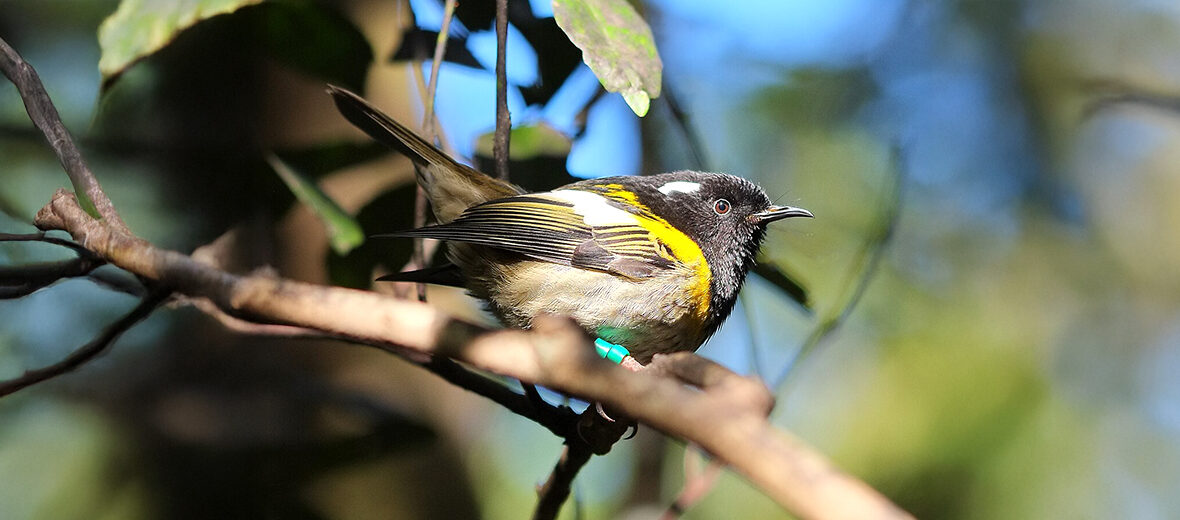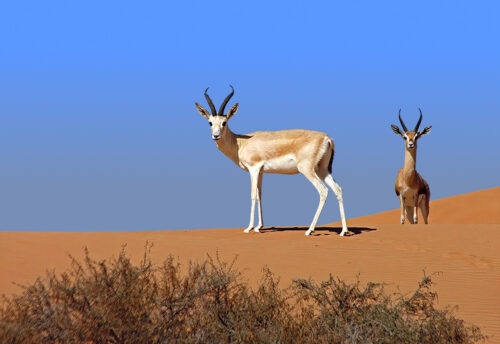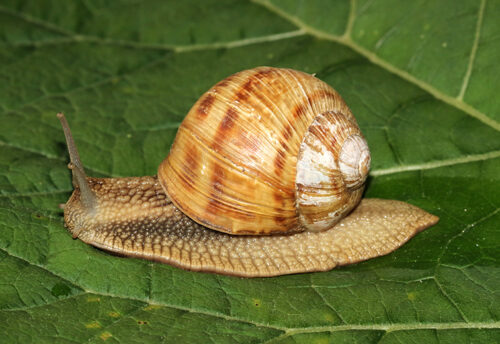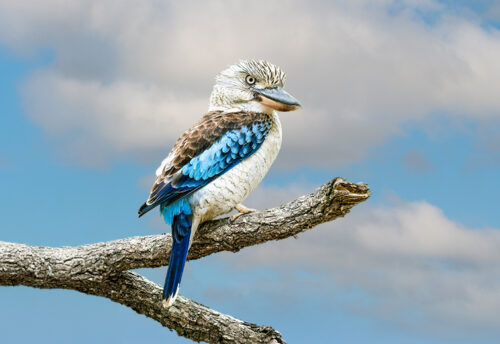
The stitchbird, aka tihi, ihi, tihe, kotihe, tiora, tiheora, tioro, kotihe-wera (male only), hihi-paka (male only), hails from Little Barrier Island. These birds have been extirpated from all other locales. They face the threats of habitat loss and destruction at the hands of farming and ranching; invasive species, such as black rats; and disease, primarily avian diseases. They are listed as Vulnerable by the IUCN. Their population trend is listed as stable though.
First the Stats…
Scientific name: Notiomystis cincta
Weight: Up to 1.48 ounces
Length: Up to 7.09 inches
Wingspan: Up to 7.09 inches
Lifespan: Up to 10 years
Now on to the Facts!
1.) Other common names include: hihi-matakiore (female only), mata-kiore (female only), tihe-kiore (female only).
2.) These birds were first described by Buller (1888), who relied on the detailed observations of Reischek. While F. W. Hutton had observed the species earlier in 1867, he didn’t collect any specimens.
3.) Their most common call, a “tzit tzit” sound, is believed to be the source of their common name. They also produce other calls, such as a high-pitched whistle, an alarm call which is a nasal “pek” like a bellbird, a piercing 3-note whistle, and other calls.
4.) Their primary food is nectar, but their diet includes over 20 species of native flowers and 30 species of fruit, as well as many species of introduced plants. They also feast on the occasional insect.
5.) These birds were predominantly common early in the European colonization of New Zealand, and began to decline pretty quickly afterwards, being extinct on the mainland and many offshore islands by 1885.
But wait, there’s more on the stitchbird!
6.) These birds are the only species that mates face to face, in comparison to the more conventional copulation style for birds wherein the male mounts the female’s back.
7.) Females lay up to 6 eggs that hatch in up to 19 days.
Did you know…?
There are only an estimated 3,100 wild individuals remaining, to date.
8.) Starting in the 1980s the Department of Conservation translocated a number of individuals from Hauturu to other island sanctuaries to create separate populations.
9.) These islands were a portion of New Zealand’s network of offshore reserves which have been allegedly cleared of all introduced species and which protect other rare bird species including the kākāpō and takahē.
10.) In 2005, 60 stitchbirds were released into the Zealandia wildlife sanctuary in Wellington and in October of the same year, 3 stitchbird chicks hatched there. It was the first time in more than 120 years that a stitchbird chick had been born on the mainland.
Now a Short Stitchbird Video!
Be sure to share & comment below! Also, check out the Critter Science YouTube channel. Videos added regularly!

Want to suggest a critter for me to write about? Let me know here.
Some source material acquired from: Wikipedia & IUCN
Photo credit: Pseudopanax




Leave a Reply